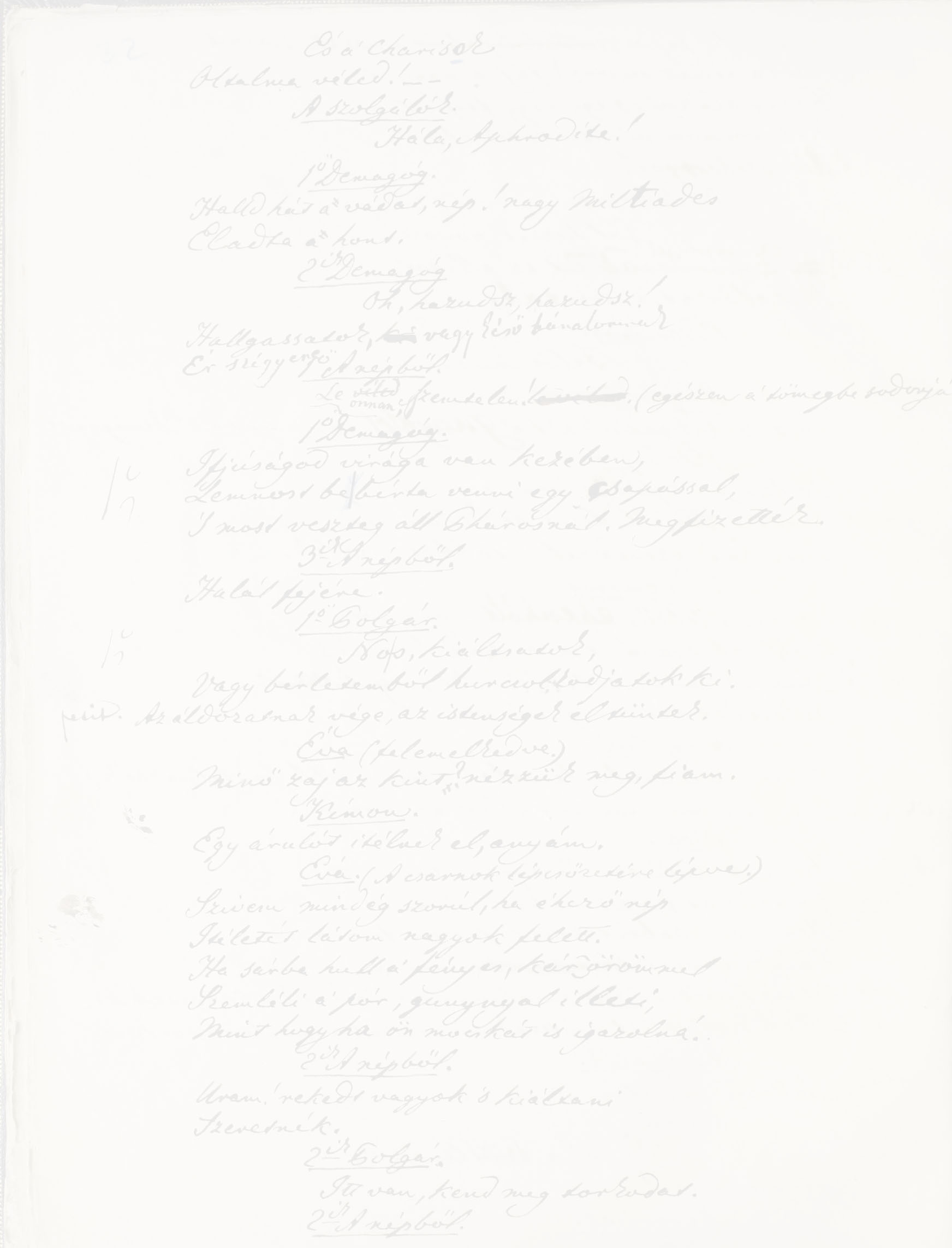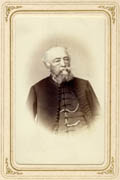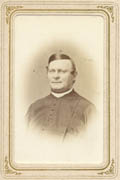


The Archaeological Committee of the Hungarian Academy of Sciences,
founde in 1858, set as its goal to prepare a survey of the archives, antiquities
and historical buildings of Hungary.
1
 The Committee entrusted Ferenc Kubinyi
2 and Flóris Rómer
3 with the coordination of the work. Kubinyi, a honorary member of
the Hungarian Academy of Sciences, was one of the leaders of the parliamentary
opposition in the Age of Reforms. A lawyer by profession, he suffered several years
of prison because of his engagement in the War of Independence. After his
release, he researched history and archaeology. He returned shortly before the
commission from Istanbul, where he investigated after King Matthias’ disappeared
codices on behalf of the Academy.
The Committee entrusted Ferenc Kubinyi
2 and Flóris Rómer
3 with the coordination of the work. Kubinyi, a honorary member of
the Hungarian Academy of Sciences, was one of the leaders of the parliamentary
opposition in the Age of Reforms. A lawyer by profession, he suffered several years
of prison because of his engagement in the War of Independence. After his
release, he researched history and archaeology. He returned shortly before the
commission from Istanbul, where he investigated after King Matthias’ disappeared
codices on behalf of the Academy.
 Flóris Rómer, a Benedictine priest and professor, historian and archaeologist
was still only a corresponding member of the Academy, but his book on the
archaeological monuments of the Bakony mountains, published in 1860, made his
name well-known throughout the country. He was the founder and, from 1861, the
first leader of the Manuscript Department of the Library of the Hungarian
Academy of Sciences.
Flóris Rómer, a Benedictine priest and professor, historian and archaeologist
was still only a corresponding member of the Academy, but his book on the
archaeological monuments of the Bakony mountains, published in 1860, made his
name well-known throughout the country. He was the founder and, from 1861, the
first leader of the Manuscript Department of the Library of the Hungarian
Academy of Sciences.
In August 1862 the two scholars and the architect Károly Bergh went to Nógrád
county, to survey and draw the renowned church and secular buildings of this
region, rich in historical landmarks. What led them to turn, loaded with
valuable drawings and protocols, off the convenient highway and to proceed on a
breakneck secondary road to Alsósztregova? Shortly before that, the Vasárnapi
Újság published the portrait and biography of Imre Madách,
4
and this fresh memory prompted them to salute the bright new star of the
Hungarian literature in his home town.
On their arrival they got to know that recently left the hospitable house János
Arany, who was a guest of Imre Madách on his return from the spa of Szliács.
They had a nice welcome in the castle, which was not surprising, given that
Ferenc Kubinyi was well known all over the county.
During their stay they saw the beautiful, well-kept garden of Madách, the
apparently ancient, but historically rather uninteresting Lutheran church, and
the old castle of the family, which also served as a fortress during the Ottoman
occupation. The Turks destroyed it, and only the grandfather of Imre Madách,
Sándor rebuilt it. During Kubinyi’s and Rómer’s visit it was used as a granary
and the home of the land-steward.
Rómer was especially interested in the neatly organized, cataloged and well-kept
family archive, which in this respect was an exception among the private
archives seen by him. Already in 1857 Imre Madách reported to the secretary of
the Academy, Ferenc Toldy, about the treasures of their family archive – it was
probably then that he cataloged it –, and he even sent a small sample from the
manuscript of the Haazy Apatéka, translated from Czech by one of his
ancestors, Gáspár Madách. (This manuscript was considered important by
bibliographer József Szinnyei.)
After several days of sojourn, they happily and contentedly left Alsósztregova.
Their host accompanied them on horseback to the neighboring Gács. “Who knew
then, that I shook Madách’s friendly hand for the last time?” – wrote later
Flóris Rómer.
In memory of this visit, Imre Madách gave a very precious gift, an incunabulum
to the Library of the Hungarian Academy of Sciences. It was printed in German
territory, with the title Hymni. Expositio hymnorum cum commento.
Hagenau : [Heinrich Gran], 1493. The work was compiled by the 12th-century
theologian Hilarius. Today it is preserved in the Department of Manuscripts and
Rare Books of the Library of the Hungarian Academy of Sciences, shelfno. Inc. 383/koll. 1.
Madách wrote a recommendation on the flyleaf of the book: “To the Hungarian
Academy of Sciences recommends this book Imre Madách. In Alsósztregova, on 23
August 1862. In memory of this pleasant day, when I had the luck to pay honor to
my friends Ferenc Kubinyi and Flóris Rómer in my house.”
We do not know how this volume found its way to the Madách library. According to
the possessor entries on the flyleaf and the first page, it first beloned to
Stephanus de Rewa, and in the late 18th century it got to Gáspár Szulyovszky,
probably a member of the town council of Pozsony/Bratislava, who had been a
pupil of Mátyás Bél in the Lutheran lyceum in Bratislava. It was probably
purchased by Sándor Madách, Imre’s grandfather, because it was him to
re-establish the family library, which had been scattered at the time of János
Madách.
5
It is certain that the author of the Tragedy donated one of the most
cherished family treasures to the Library of the Academy. In 1913 the manuscript
legacy and library of Madách got into the Library of the Hungarian National
Museum. József Szücsi, the researcher of the library published its catalog in
the appendix of his study.
6
He ascertained that the library reflects the diligence of three family members:
of Sándor Madách, the poet’s grandfather, of Imre Madách Sr., and of the poet.
The almost 1100 volumes embraced the publications of the period of the
collectors, from the late 18th century to the middle of the 19th century.
Earlier works are rare to find in it.
The donation of Madách was announced in the small assembly of the Hungarian
Academy of Sciences, and in §. 335 of the protocol they accepted it with thanks,
handing it over to the Library of the Academy.
7
Some weeks after receiving news about the death of Madách,
Rómer wrote his memories on their visit to the writer. His article was published
with the title Remembering Imre Madách
in the 10 December 1864 issue of the Vasárnapi Újság.
8
The incunabula, however, was not the only gift of Madách. The writer otherwise
facing continuous financial problems offered 200 forints from the 327.5 forints
honorary of the first edition of The tragedy of man to enrich the capital
of the Academy. On 20 February 1862 he wrote the following to János Arany, whom
he appointed to hand over his donation: “…it was my firm intention to dedicate
my first spolia [acquisitions, here: honoraries] on the altar of the
Muses, so I offered … 200 forints complemented to the capital of the Academy.”
9
It was already among the most important plans of the Academy’s founder István
Széchenyi to establish a building of its own for the Academy. In the Age of
Reforms this could not be realized for various difficulties. In 1858 Baron Simon
Sina, a Greek-born Viennese banker, a member of the board of directors of the
HAS offered 80 thousand forints for the building of the palace of the learned
society. As a result, in 1859 the HAS launched a collection for the construction
of the Academy’s own home. The national donation grew into the most important
social movement of the period between the war of independence and the Compromise
of 1867. Thousands of private people and a multitude of the societies coming
into being after the softening of the authoritarian system sent their donations
to the Academy. The amount coming from the collection – more than 670 thousand
forints – almost entirely covered the costs of construction. The palace of the
Academy, built also with the contribution of Imre Madách, opened its doors in
December 1865, and still stands in the service of Hungarian science.